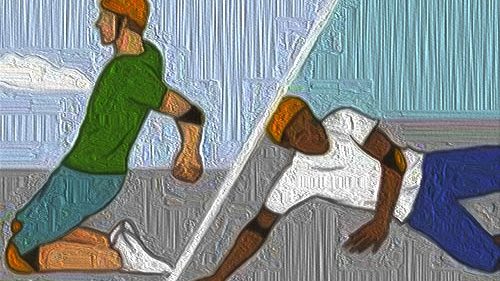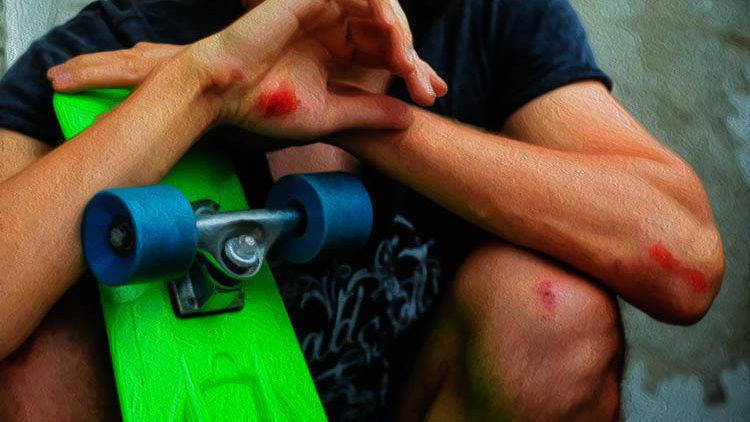If you want to learn how to fall on a skateboard remember that skateboarding is an entirely different world. It’s defined by the people who do it and those that watch them from afar as they navigate their way around town or across the country; some might even say it defines us as individuals.
If you’re looking for something more than just style points- then skating could be what fits your needs perfectly! But don’t forget: “You have to pay if you want to play,” said Danny Way.
So make sure before trying anything new on this board, whether it’s tricks or surfaces… Make mistakes with grace because there eventually comes a time when no one will care how good of shape.
A lot of work goes into skateboarding. But there is nothing more frustrating when you fall and can’t get back up again. It just makes the process seem less worthwhile because no matter how hard we try. Some things will always happen to us.
Types of Skateboard Falls
Falling Off:
This is what happens when you lose your board and fall without hitting the ground.
Bailing:
If you’re off balance and feel like things are about to spin out of control, don’t wait for the fall; bail on your trick before it’s too late.
Slamming:
When you fall off your board and hit the ground, it’s an unfortunate reality that this is what can happen. You lose control of tricks for a split moment before taking flight in another direction. Or pick yourself up from beneath all those snowbanks.
With this said, let me tell you what every person needs to minimize their risk factors while still doing tricks at high speeds.
How to fall on a Skateboard? Safely or with fewer injuries
1. Prevent Falling
- Have grip over Ride
- Stop Skate Board
- Be Attentive
- Ride in a Safe Environment
- Increase Balance and Strength
2. Falling with less or without Injuries
- Wearing Right Safety Gears like
- Helmet
- Elbow Pads
- Knee Pads
- Wrist Guards
- Padded Shorts
- Shoes
- Runoff your Skateboard
- The Knee Slide
- Spread out the force
- Stay loose
Try Not to Hit Your Head
If you fall off your skateboard, the number-one rule is always to have a helmet on. If this doesn’t work and the head gets injured in an accident or if someone else falls onto them while they are unconscious from falling too far down, then life will be worse than before because now nothing is stopping bad things from happening!
The best way for beginners at skating is to put their heads up when rolling over terrain that could cause injury. After a while, these instincts kick into gear. Automatically handling any risk becomes second nature as long one’s body has known how to do it right.

When falling on your back, make sure to keep the area around your neck protected. It includes either using arms or taking them off of anything that could cause further harm and risk a spinal cord injury.
It happens by landing directly onto hard surfaces such as concrete pavement from shoulder height without first rolling into bowing. It will mitigate impact enough not to break any bones but may still sustain damage in other areas like an occipital bone.
Be Careful about Arms and Legs
The most common injuries in skateboarding are to the arms and legs. Shin bashes can be avoided by learning new tricks, but shins will always get nicked- whether it’s a broken arm or leg is determined mainly by how much force was used when falling onto one of these joints while attempting an ollie, for example.
It may also depend on what surface you’re skating over at that time – if there isn’t asphalt, then this type of injury might not happen so often. Brace yourself, though, since nothing occurs initially with your body rhythms during the fall delivery phase.

Once you hit ground level, all other variables have changed, meaning things could potentially go from bad to worse should something else occur. If you skate and your bones crack, don’t be embarrassed. Get medical care to prevent complications from a broken bone.
Many people who engage in this sport have experienced some injury at one point or another. There are stories about getting stitches after falling on an icy sidewalk while skating, sprains that keep happening again no matter how hard they stretch out over time.
It might not seem appealing, but there is nothing wrong with seeking assistance when needed if it means preventing those pesky recurring issues like sores developing due to lackadaisical exercise routines.
The Mark of a Skater
You’ve undoubtedly heard of the ninja roll, but do you know how to perform it? If not – well, I’m about to teach you. It’s an essential skateboard move that pro skaters[1] use when rolling down hills or jumping offsets of stairs.
When things go wrong and your board stops mid-air. This technique can save one from having any brain damage at all by bringing them safely back onto their feet with nary a scratch on either side.
When thrown forward off of your skateboard. Tuck the back shoulder in a direction going towards it and allow your arm to contact with concrete. Tuck your chin into the chest as you arch yourself while rolling onto all fours for protection against any blows that may come at this time.
Such as asphalt or street paved pavement if no vegetation present can cushion. Some impact on one’s body parts is just like how grass does so when walking over it during an outdoor stroll.
However, do not forget about grabbing hold tightly around anything metal-like because these could serve well depending upon where one happens.
Final Verdict
Skaters often take a spill, and it’s essential to be prepared. Skating isn’t for the faint of heart. Even if you’re cruising around campus or back home safely riding your bike, one wrong turn can lead to an injury that could change everything.
